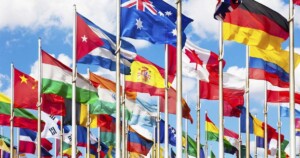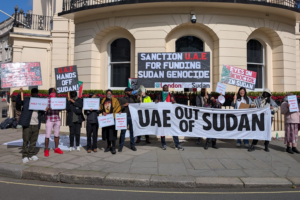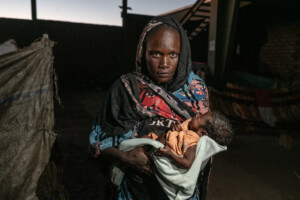Sudan OCHA bulletin 47: One third of the Sudanese have access to improved sanitation
On the occasion of the World Toilet Day on 19 November, the UN Office for the Coordination of Humanitarian Affairs (OCHA) reported in its latest bulletin that one third of the Sudanese people have access to improved sanitation. The international NGO Save the Children is phasing out its health and nutrition services in 20 centres in South Kordofan because of funding constraints. The number of arrivals from Sudan to Italy by sea have increased this year.
In Sudan, as of 2014 only 23.6 percent of the population (about 9 million people out of 38.4 million) have access to improved sanitation, according to the World Bank and the World Health Organization/UN Children’s Fund Joint Monitoring Programme (JMP) for Water Supply and Sanitation (WSS).
On the occasion of the World Toilet Day on 19 November, the UN Office for the Coordination of Humanitarian Affairs (OCHA) reported in its latest bulletin that one third of the Sudanese people have access to improved sanitation. The international NGO Save the Children is phasing out its health and nutrition services in 20 centres in South Kordofan because of funding constraints. The number of arrivals from Sudan to Italy by sea have increased this year.
In Sudan, as of 2014 only 23.6 percent of the population (about 9 million people out of 38.4 million) have access to improved sanitation, according to the World Bank and the World Health Organization/UN Children’s Fund Joint Monitoring Programme (JMP) for Water Supply and Sanitation (WSS).
The absence of adequate sanitation has a serious impact on health and social development, especially for children, according to WHO. An improved sanitation facility –a proper toilet– separates human waste from human contact.
The Multiple Indicator Cluster Survey (MICS) 2014 survey for Sudan indicates that 32.9 per cent of household members in Sudan are using an improved sanitation facility, OCHA reports in its bulletin.
 This means that the number of people in Sudan who lack access to improved sanitation is estimated to be between 25.7 million (JMP for WSS) and 29.3 million people (MICS 2014). About half of them are children.
This means that the number of people in Sudan who lack access to improved sanitation is estimated to be between 25.7 million (JMP for WSS) and 29.3 million people (MICS 2014). About half of them are children.
According to a 2008 WHO report on the impact of safe water and sanitation on health, 88 per cent of diarrhoea cases globally are attributable to unsafe water, inadequate sanitation or insufficient hygiene.
Humanitarian funding gap
The WASH sector is seeking $78 million from donors for its 2016 activities in Sudan. The Financial Tracking Service (FTS) reported that as of 20 November, the water, sanitation and hygiene (WASH) sector in Sudan is only 26.4 per cent funded against the 2016 Sudan Humanitarian Response Plan (HRP).
During a mission to Sudan in early November, John Ging, OCHA Director of the Operations highlighted a major funding gap for humanitarian action in Sudan amounting to $555 million. He said that his mission to the region focused on the issue of connecting humanitarian actions with development.
 Save the Children phasing out services in South Kordofan
Save the Children phasing out services in South Kordofan
The international NGO Save the Children Sweden (SCS) announced that it is phasing out health and nutrition services in 20 centres in South Kordofan State because of funding constraints. This will affect about 200,000 displaced people and their host communities.
Through the centres in Dalami, El Goz, Abu Kershola, Habila, Kadugli, Kalogi, Dellling, and El Rif Ashargi. SCS provides health and nutrition services for more than 58,000 displaced people and 142,000 people from the host communities.
Increase in 2016 arrivals by sea to Italy from Sudan
On 18 November, IOM issued an infographic on migration flows to Europe indicating that the number of arrivals by sea to Italy from Sudan during January-August 2016 increased compared to the same period of 2015, while the number of arrivals from Eritrea and Somalia dropped significantly.
Sudan is one of the main transit countries for Eritreans and Somalis travelling to Italy by sea. According to IOM, between 1 January and 17 November 2016, 167,276 persons arrived to Italy by sea, compared to 140,987 sea arrivals in the first 10 months of 2015. The total number of arrivals in Italy this year is similar to those of the previous two years, but recently IOM has noticed an increase in departures from Libya.
In April 2016, the European Union said it would provide about €100 million (an estimated $110 million) to address irregular migration and improve living conditions of refugees and host communities in eastern Sudan.
Sudan also benefits from additional funding under the EU Emergency Trust Fund for Africa, including a €40 million (about $42.5 million) programme to better manage migration in the region. In addition, the German government has earmarked €12 million (about $12.7 million) for projects aimed at stemming illegal immigration of Africans across Sudan to Europe.











 and then
and then